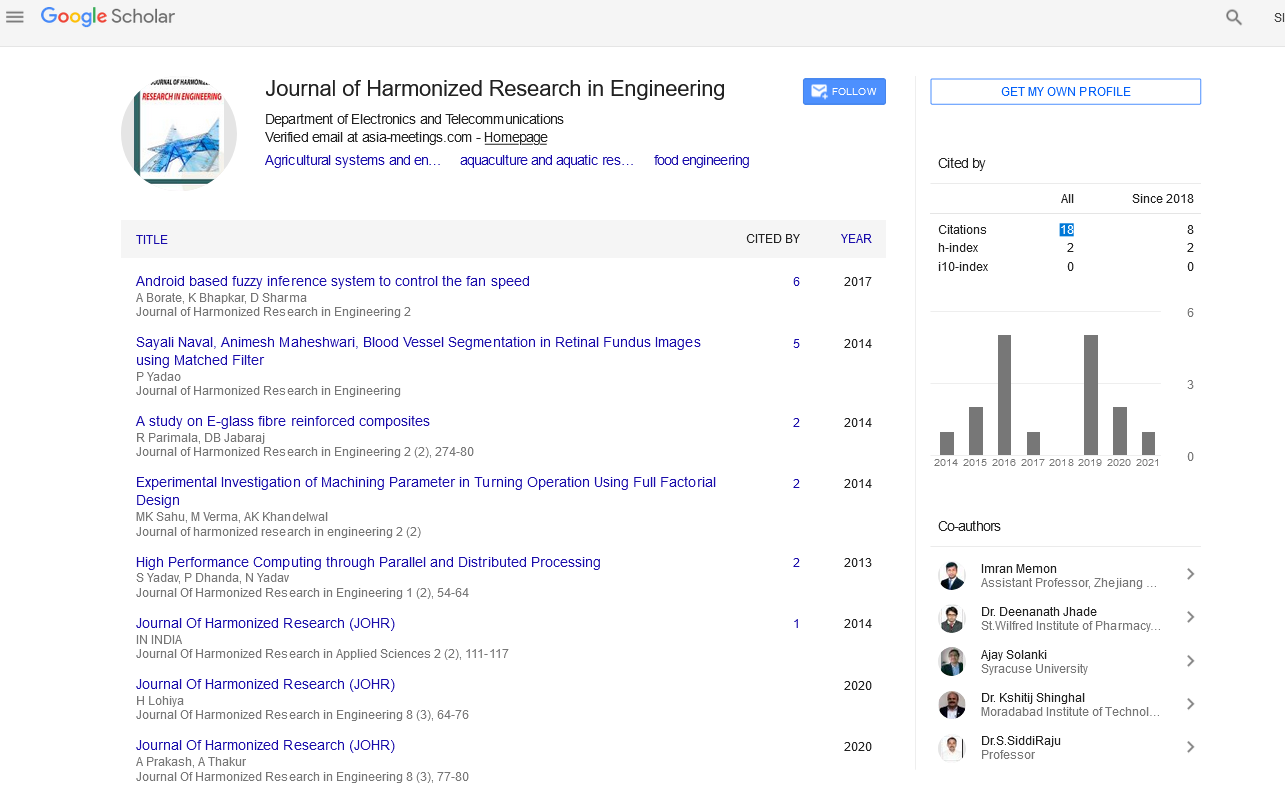Short Communication - (2022) Volume 10, Issue 4
BELBINâS ROLES IN PROJECT-BASED LEARNING TO ENHANCE STUDENTSâ PERFORMANCE
Marie Denley*Received: Nov 01, 2022, Manuscript No. JHRE-22-85079; Editor assigned: Nov 04, 2022, Pre QC No. JHRE-22-85079 (PQ); Reviewed: Nov 18, 2022, QC No. JHRE-22-85079; Revised: Nov 25, 2022, Manuscript No. JHRE-22-85079 (R); Published: Dec 05, 2022, DOI: 10.30876/2347-7393.22.10.207
Description
This method was developed and implemented by instructors with the goal of increasing positive interdependence and individual accountability within teams and improving their performance in a project-based learning environment. Students’ performance was measured using project, individual exam, and Individual Accountability Factor (IAF) scores and compared to cohorts from previous years, in which team composition was self-selected by students. Belbin teams outperformed self-selected teams by a wide margin. In addition, students’ feedback, experience, and opinions have been gathered. Students in Belbin teams report that they attend classes more frequently, require less time for study outside of class, and have a greater interest in the subject at the end of the course. They also agree that being a part of Belbin teams has helped them to improve their interpersonal relationships and social skills, as well as their positive interdependence and individual accountability. This team formation method allows students to identify their own strengths and weaknesses as well as the roles of their teammates and their own strengths and weaknesses [1]. Furthermore, it encourages students to explicitly focus on group work skills.
The ability to communicate and work effectively in a team is currently one of the most sought-after skills by engineering firms. It is also mentioned as one of the key outcomes required for engineering programme accreditation. The educational benefits of team-based learning have been extensively documented. Teamwork has traditionally been associated with subjects such as chemical engineering laboratory and senior design projects in chemical engineering programmes. In the last decade, there has been a shift away from lecture-based teaching and toward more active modes of instruction. Problem/Project based learning (PBL) with real-world problems is one approach to active and cooperative learning [2].
The difficulties and challenges that student teams must face are numerous, especially if they have little experience with teamwork and are not given guidance or support. Group composition, different motivation, expectations, or commitment among teammates, personality clashes, dominant and passive members, little or no guidance, task ambiguity, role ambiguity, academic disparity, resistance to teamwork, lack of interpersonal skills, lack of group norms, and so on are some of the major factors affecting proper teamwork development. Interpersonal conflicts caused by unequal effort and contribution of team members, as well as poor time management, are among them [3]. As a result, training students in teamwork skills is critical, despite some resistance from instructors and institutions in the literature, which is related to already fixed and full programmes, a lack of time for developing specific teamwork courses or lessons within a subject, and a lack of instructors’ skills and fears, among other factors.
Several strategies for improving teamwork are proposed in the literature. Maintain a small group size, process group and individual contributions, coaching sessions, reflective sessions on teamwork, formal and informal communication, provide feedback on both individual and collective performance within a team, self- and peer assessment, incentives, gamification, team formation, and so on. Furthermore, team formation is a key factor for effective teamwork, particularly for long-term projects, as a potential method for increasing positive interdependence and individual accountability within the team. Team formation and management processes are specifically designed to meet the needs of two types of assets: I Groups must have enough intellectual resources to complete their assigned tasks; ii) members must interact productively with one another [5].
Conclusion
Despite the fact that different experiences on team formation can be found in the literature, there is no clear evidence to support the best method for forming effective teams in terms of improving overall team performance and project results. As a result, it is frequently a source of contention among faculty members. Described with the help three methods for team formation: random, student (self), and instructor selection. Because of the random selection, all teams have equal chances of success or failure. It is simple and quick to implement, and it is useful for short-term tasks. Students can choose the members of their team through self-selection. If the members know each other personally, they are aware of each other’s strengths and weaknesses, as well as their out-of-class obligations. This frequently results in teams that are unbalanced in terms of skills, abilities and specialisation, gender, or ethnic background, limiting learning opportunities. They gathered more team experiences from self-selected groups than from randomly chosen groups.
References
- Ballesteros MA, Daza MA, Valdés JP, Ratkovich N, Reyes LH. Applying PBL methodologies to the chemical engineering courses: Unit operations and modeling and simulation, using a joint course project. Educ Chem Eng. 2019;27:35-42.
- Batenburg R, van Walbeek W. Belbin role diversity and team performance: is there a relationship?. J Manag Dev. 2013.
- Belton DJ. Teaching process simulation using video-enhanced and discovery/inquiry-based learning: Methodology and analysis within a theoretical framework for skill acquisition. Educ Chem Eng. 2016;17:54-64.
- Burkholder E, Hwang L, Sattely E, Holmes N. Supporting decision-making in upper-level chemical engineering laboratories. Educ Chem Eng. 2021;35:69-80.
- Chapman KJ, Meuter M, Toy D, Wright L. Canâ??t we pick our own groups? The influence of group selection method on group dynamics and outcomes. J Manag Educ.2006;30(4):557-69.

Google Scholar citation report
Citations : 43
Journal of Harmonized Research in Engineering received 43 citations as per google scholar report









